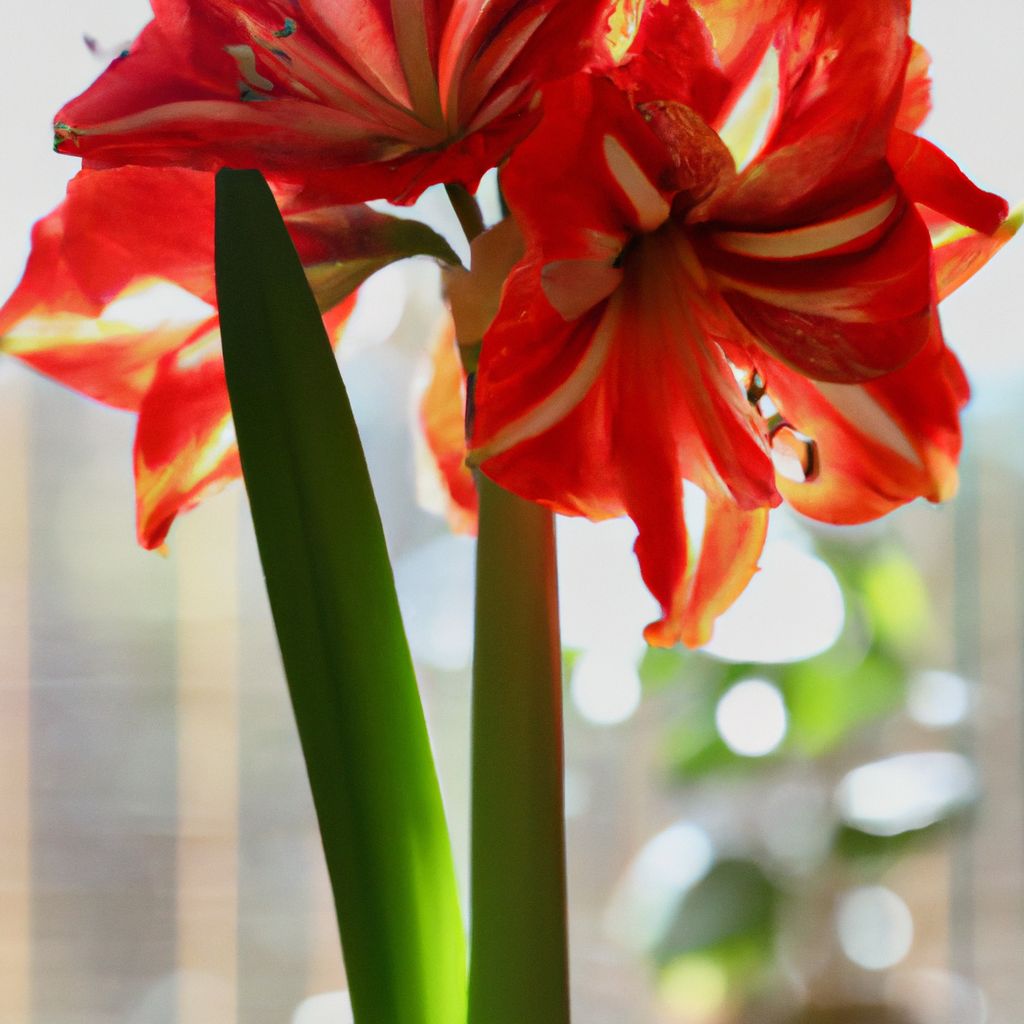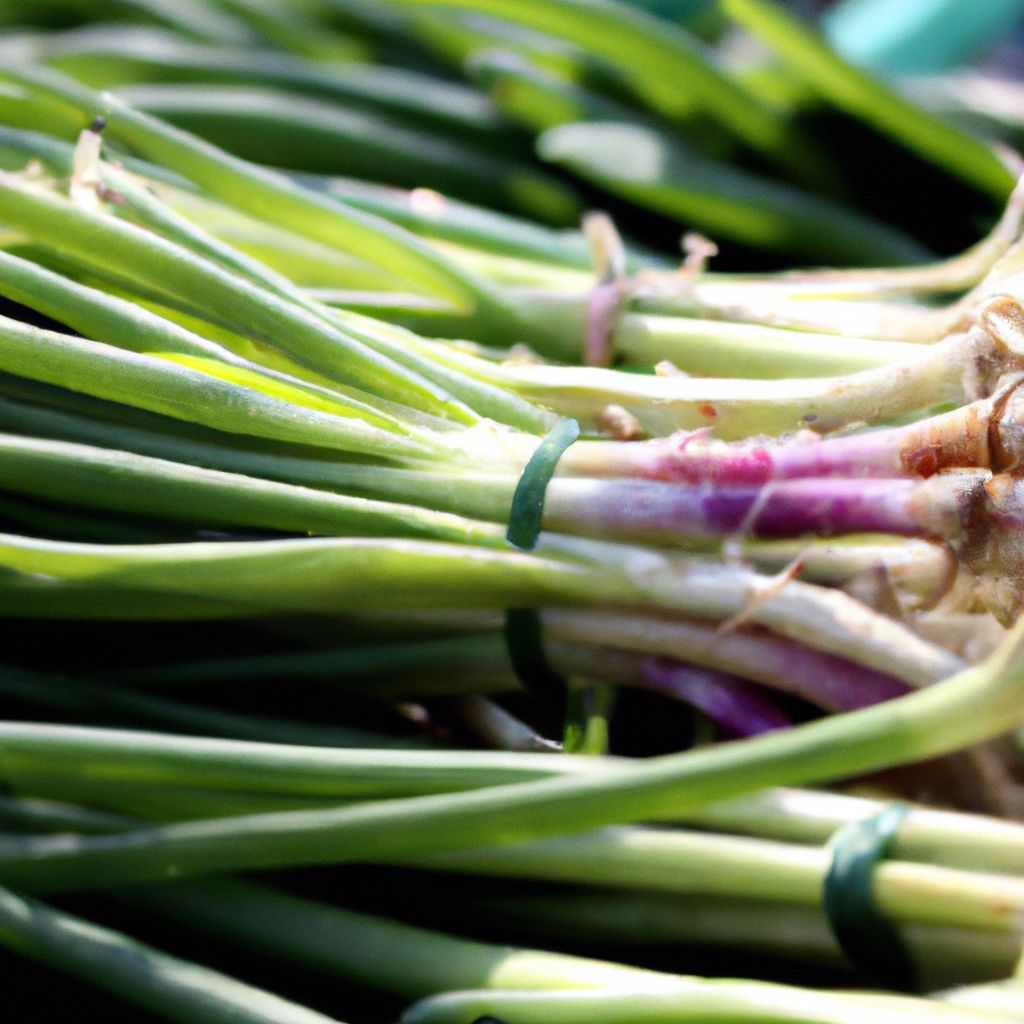Known for their trumpet-shaped blooms and impressive stature, amaryllis plants can brighten up any indoor space during the winter months. With the right amaryllis plant care and selection of bulbs, these striking flowers are easy to grow at home. This comprehensive guide will provide tips on choosing, planting, and caring for amaryllis to keep your plants thriving, ensuring a vibrant display of blooms to brighten your winter days.
Choosing and Planting Amaryllis Bulbs

What is an Amaryllis flower?
Amaryllis is a small genus of flowering bulbs, with two species. The common name “amaryllis” comes from the Greek word amarysso, which means “to sparkle.” The plants are known for their large, beautiful, trumpet-shaped flowers. They are often grown indoors over the winter months and then moved outside for the summer. The blooms come in a variety of colors including red, white, pink, salmon, and orange. The flowers can be solid, striped or multicolored. The beauty of the amaryllis flower is unparalleled, making it a popular choice among gardeners.
Why Grow Amaryllis at Home?
- Easy to Grow: With basic care, amaryllis bulbs will grow into tall, beautiful plants with stunning, trumpet-shaped flowers. They are not demanding and can thrive with minimal attention.
- Winter Blooms: Amaryllis are cherished for their ability to bloom in the winter, bringing color and life to your home during the colder months. Their vibrant colors can brighten up any space, providing a cheerful ambiance.
- Long-Lasting: With proper care, amaryllis bulbs can last for many years, providing beautiful blooms each season. They are a long-term addition to your garden or indoor plant collection.
How to Select a Healthy Bulb
- Size: Larger bulbs will produce more flowers. Look for bulbs that are at least 3 inches in diameter. The size of the bulb is directly proportional to the number of flower stalks and blooms it will produce.
- Firmness: The bulb should feel firm, not soft or mushy. A firm bulb is a healthy bulb, ready to grow and bloom.
- Appearance: Avoid bulbs with visible mold, damage, or any signs of decay. Inspect the bulb thoroughly to ensure it’s free from diseases and pests.

Where to Buy Bulbs
- Local Nurseries: Local nurseries often carry a selection of amaryllis bulbs, especially in the fall. They can provide varieties that are known to perform well in your region.
- Online Retailers: Many reputable online retailers offer a wide variety of amaryllis bulbs. This is a great option if you are looking for rare or unique varieties.
- Garden Centers: Large garden centers may have a seasonal selection of amaryllis bulbs. They also offer the advantage of seeing the bulb before you buy.
Planting Instructions
- Pot Selection: Choose a pot that is about 2 inches wider than the diameter of the bulb and has drainage holes to prevent waterlogging. The pot should be sturdy enough to support the tall, top-heavy flowering stalks.
- Soil Preparation: Use a well-draining potting mix, such as a mix designed for succulents or cacti. Amaryllis bulbs rot easily, so a well-draining soil is crucial.
- Planting Depth: Plant the bulb so that the top third remains above the soil line. This allows the bulb to have enough space to root properly.
- Watering: Water thoroughly after planting, allowing excess water to drain away. Keep the soil moist but not wet as the bulb establishes roots.
Preparing the Soil
- Soil Type: Amaryllis plant care is easy when you understand that they prefer a well-draining soil to prevent root rot. A soil mix designed for succulents or cacti works well. You can also amend a standard potting soil with perlite or sand to improve drainage.
- Soil pH: A neutral to slightly acidic pH (6.0 to 7.0) is ideal for amaryllis. This pH range provides an optimal environment for nutrient uptake.
- Fertilizer: Mix a slow-release fertilizer into the soil at planting time to provide nutrients throughout the growing season. A balanced fertilizer with equal parts nitrogen, phosphorus, and potassium is a good choice for amaryllis.
Caring for Amaryllis

Watering and Drainage
- Watering Frequency: Water whenever the top inch of soil feels dry to the touch. Over-watering is a common mistake that can lead to root rot and other problems.
- Drainage: Ensure your pot has drainage holes to prevent waterlogging, which can lead to root rot. Place a saucer under the pot to catch excess water, but empty the saucer if water collects there.
Light and Temperature
- Light Requirements: Amaryllis thrive in bright, indirect light. They can tolerate some direct sunlight, but too much can cause leaf burn.
- Temperature: Ideal temperatures are between 65-75°F during active growth periods. Cooler temperatures can slow growth and flowering.
Fertilization
- Fertilizer Type: Use a balanced liquid fertilizer every 2-4 weeks. A fertilizer high in phosphorus can encourage more blooms.
- Application: Apply fertilizer to the soil, avoiding the foliage. Over-fertilization can lead to lush foliage at the expense of blooms.
Pruning and Staking
- Staking: As the flower stalks grow tall, they may need staking to provide support. Use soft ties to secure the stalks to stakes, adjusting as the stalks grow.
- Pruning: Once the flowers have faded, cut the flower stalk back to just above the bulb. Leave the leaves to continue growing, as they provide energy for the next blooming cycle.
Pest and Disease Management
- Common Pests: Watch for common pests such as aphids, spider mites, and mealybugs. Insecticidal soap or neem oil can be effective treatments.
- Disease Prevention: Avoid over-watering and ensure good air circulation to prevent fungal diseases. If you notice any diseased foliage, remove it promptly to prevent the spread of infection.
Troubleshooting Issues
- Failure to Bloom: If your amaryllis fails to bloom, it may need a period of cooler temperatures, or it may be lacking nutrients. Ensure it has a well-draining soil, adequate sunlight, and balanced fertilizer.
- Yellowing Leaves: Over-watering is a common cause of yellowing leaves. Ensure your pot has good drainage and allow the soil to dry out between waterings.
Ongoing Amaryllis Plant Care

Propagation through Division
- When to Divide: The best time to divide amaryllis bulbs is after they have finished flowering, but before the leaves have died back. This usually occurs in late summer or early fall.
- How to Divide: Carefully lift the bulb from the soil and gently separate any offsets (small bulbs) from the parent bulb. Replant the offsets in a well-draining soil, and water lightly until they establish.
Summer Care
- Outdoor Care: In the summer, move your amaryllis plants outdoors to a sunny or partially shaded location. They will enjoy the fresh air and natural sunlight.
- Watering: Water regularly, keeping the soil moist but not waterlogged. Adjust your watering schedule based on rainfall and temperature.
Preparing for Dormancy
- Reducing Water: In late summer, reduce watering to encourage dormancy. Allow the soil to dry out between waterings, and stop fertilizing.
- Cool, Dark Storage: Store the bulb in a cool, dark place for at least 6-8 weeks to encourage flowering. A basement or garage can be an ideal location.
Enjoying the Process

Growing amaryllis is a rewarding process that can provide beautiful, colorful blooms during the winter months when other plants are dormant. With proper amaryllis plant care, your amaryllis can thrive and bloom for many years, bringing joy and color to your home. The process of nurturing a bulb into a blooming beauty is a fulfilling gardening experience that also allows you to explore your creative side by experimenting with different amaryllis varieties and colors.
















































